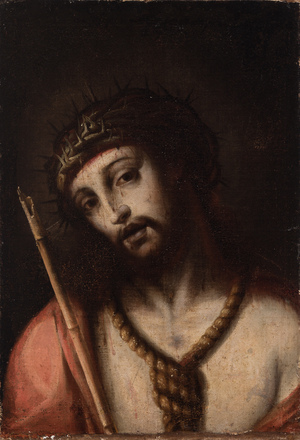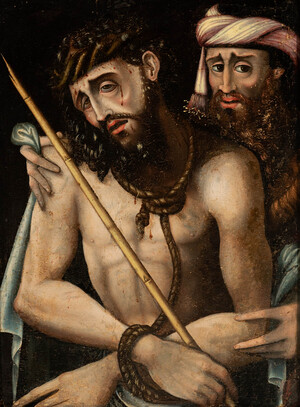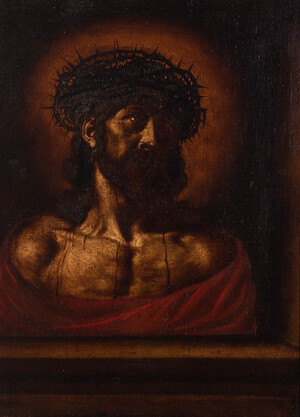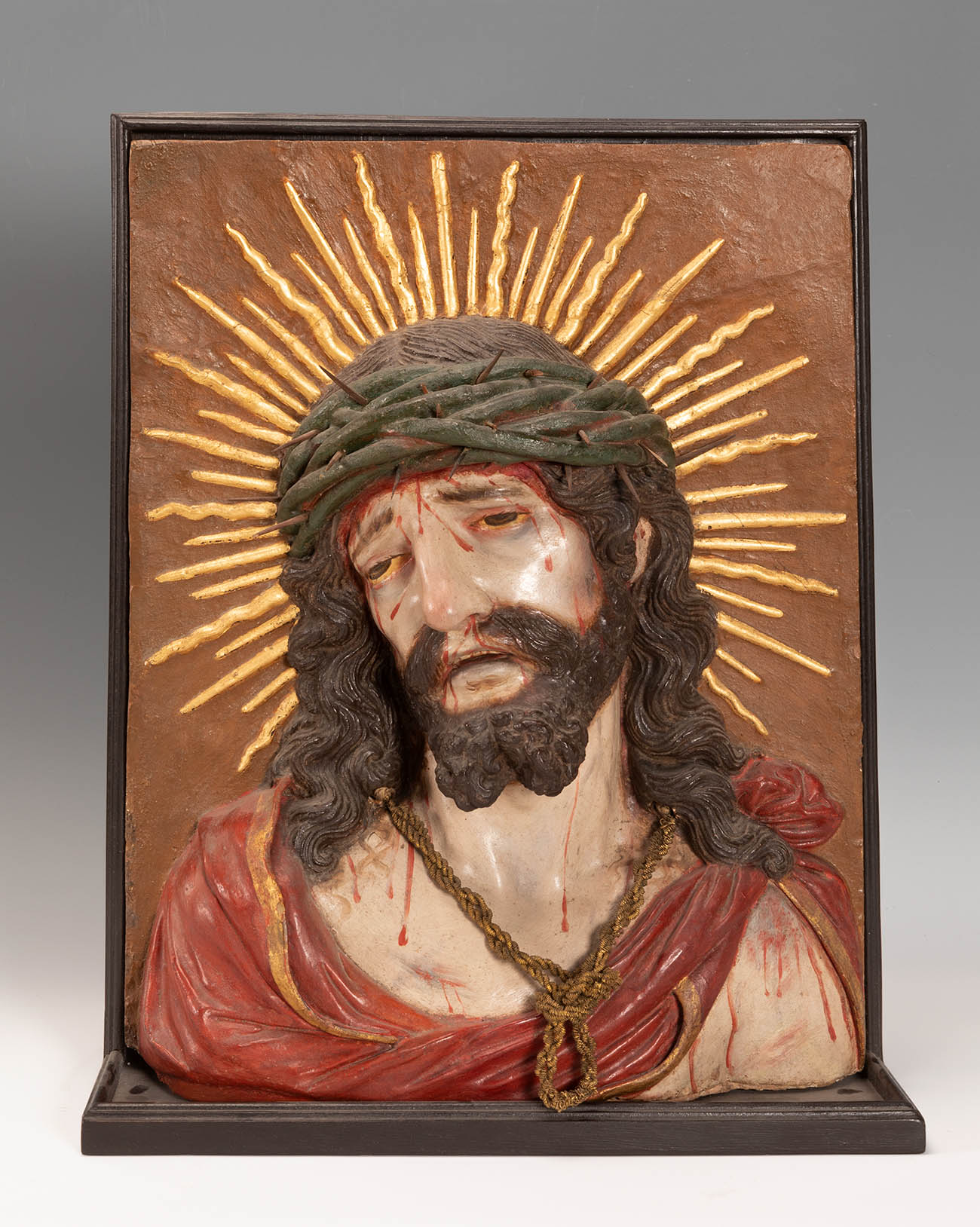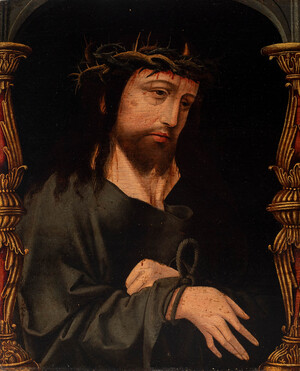This is custom heading element
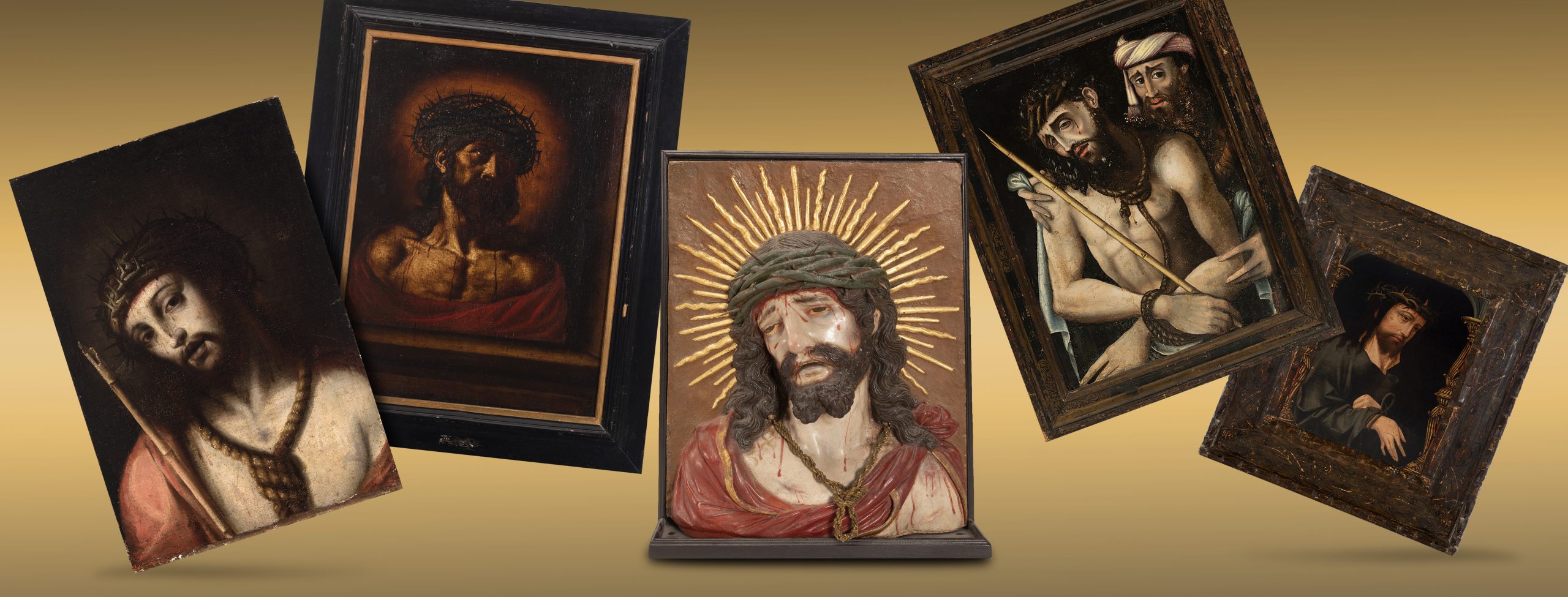
The forcefulness of the words “Behold the man” that Pilate pronounced when presenting Christ to the crowd, mocking and implying that his power was insignificant in front of those who judged him there, attracted the attention of multiple painters, who saw in This theme is a powerful way to represent the suffering of Christ.
The scene, which took place after the flagellation of Christ tied to the column and the crowning with thorns, moved all faithful who heard or saw an image of the subject, as it showed the most defenseless face of Christ, alone and badly wounded in front of a hostile crowd. to which he subjected his final destiny.
In the vast majority of works intended for private devotion, the usual thing was to summarize the scene in a single figure, that of Christ, who was normally represented half-length, on a dark background that enhanced his corporeity and without other narrative elements other than those of the that the iconography required. In this way, the expressiveness and drama of the image was concentrated, moving the soul of the faithful who prayed before it and preventing their attention from being dispersed in the details.
The importance that the “Ecce Homo” had for the history of art is demonstrated in our next auction on the 20th, in which up to five works on this theme are collected, belonging to different schools and periods. Both the Flemish school dated around 1500 (35233470 ), like the Spanish schools of the seventeenth century (35121388 , 35272006 ), respond to the iconography of Christ on a black background, with no other narrative elements than the crown of thorns; the follower of Luis de Morales (35148635 )However, it introduces the figure of Pilate, although it also places both characters on a black background that enhances their corporeity. The last of the works, a 17th century wood carving attributed to the García Brothers ( 35244644 ) , highlights the pathos and drama that this recurring theme contained.

